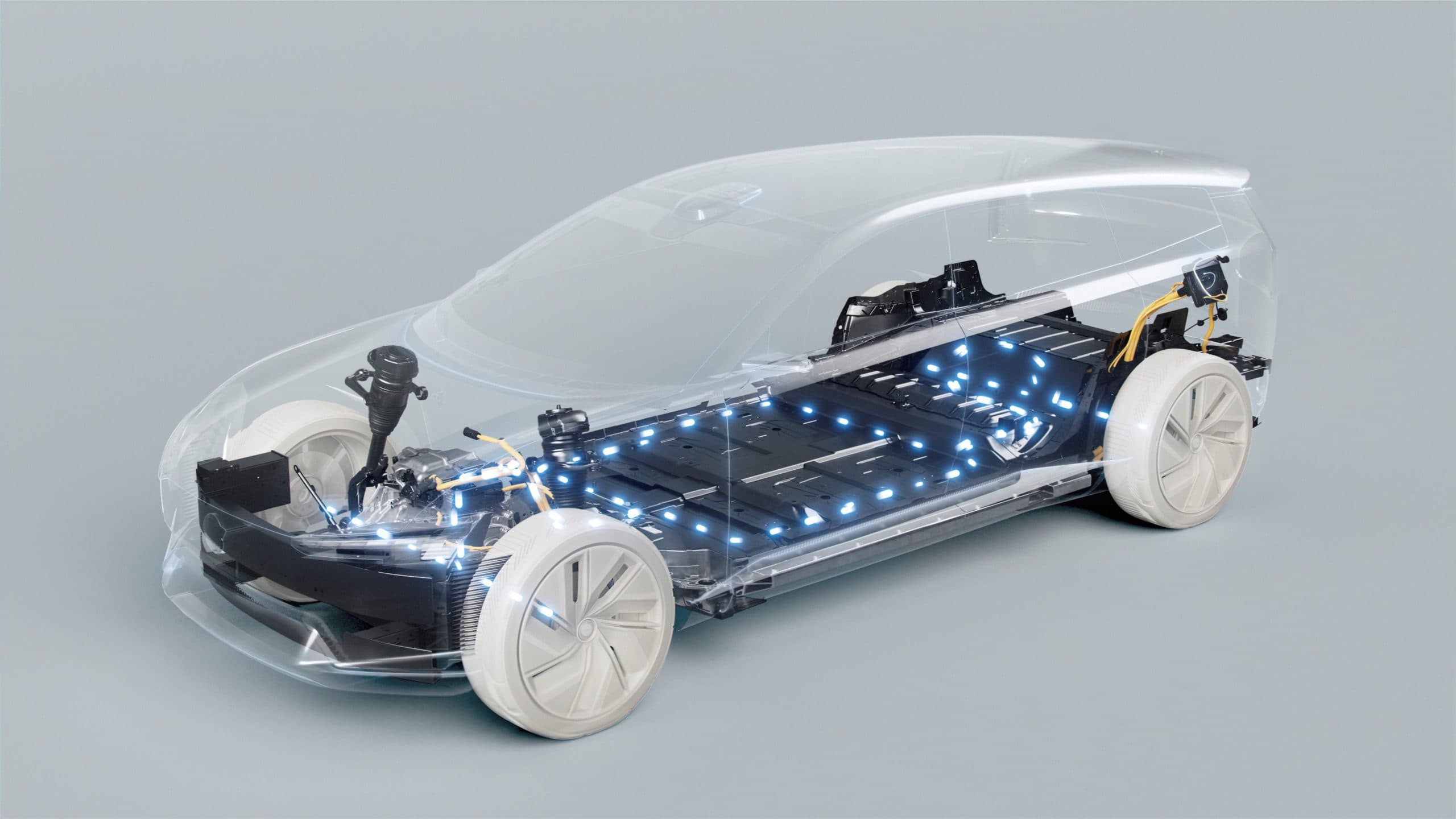Volvo has announced that it’s focusing on range and charging speeds during the development of its next-generation battery-electric vehicles. It will improve lithium-ion battery technology for its upcoming range of EVs, which includes the next-generation XC90 that will be underpinned by a new architecture specifically tailored for battery-electric applications. By the middle of the decade, Volvo will introduce the third generation of its EVs with further range improvements and a battery pack that’s completely integrated with the car’s floor and uses the cell structure to improve stiffness and efficiency.
For the near term, Volvo Car Group will work with Swedish battery maker Northvolt to increase energy density in battery cells by 50 percent versus existing units. This will be a stepping stone to Volvo’s goal of breaking 1,000 Wh/l and create a battery that can enable 1,000 km or 621 miles of real-world driving range. By mid-decade, Volvo also expects charging times to get cut in half as battery technology, software, and charging infrastructure improves.
“We want to constantly increase the customer benefits of driving a pure electric Volvo car,” said Henrik Green, chief technology officer at Volvo Car Group. “By simplifying the design and integration of our battery cells, we can reduce weight and maximize space, allowing for considerable improvements in battery capacity, range, and charging times.”
Sustainability will also be a key pillar as Volvo becomes an EV brand. As the company increases its battery use, it will work to counteract its carbon impact. The planned collaboration with Northvolt aims to produce battery cells using 100 percent renewable energy. Volvo aims to achieve that by 2025 while also working with other battery suppliers. The sourcing of batteries will also be done responsibly via working closely with partners and suppliers.
To further cut emissions and reduce its carbon footprint, the company will make better use of the valuable materials found in batteries through remanufacturing and reusing them. Volvo also intends to use these batteries for second-life applications like energy storage. Batteries that have reached the end of their life span will be recycled with authorized recyclers that can offer closed-loop recycling of high-value materials. The planned partnership with Northvolt also opens the possibility of using their recycling operations, which is already well established.
When the next-generation Volvo XC90 arrives, it will offer bidirectional charging, allowing the car to double as a power source. “We want to offer our customers sustainable pure electric cars that make their lives easier and more enjoyable,” said Green. “Through smart innovation and collaboration with key partners, we can give customers what they want — more range, faster charging, and lower costs — and further boost widespread adoption of electric mobility.”
Volvo’s electrification plan aims to vertically integrate the whole development and design process. Everything from design, production of electric motors, and software creation will be done in-house and in collaboration with its key partners. The company aims to create as many synergies as it can throughout its battery supply chain while keeping its operations as efficient as possible. Batteries built with Northvolt, for example, will be tailored specifically for Volvo and Polestar models to support their growth sustainably. The partnership with Northvolt, in particular, is crucial to Volvo becoming an all-electric brand by 2030 and will strengthen its in-house capabilities as it works with key partners in producing and developing new technology.

